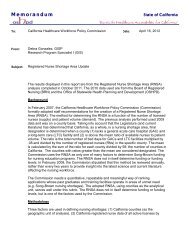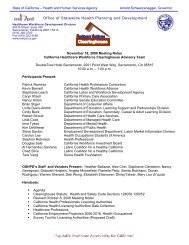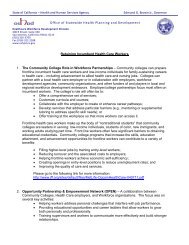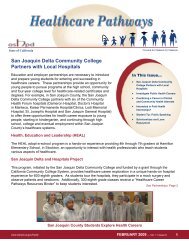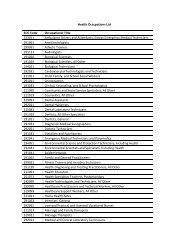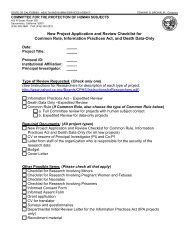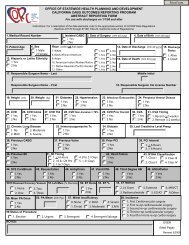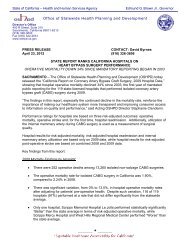Best Practices for Project Management, Design, and Construction of ...
Best Practices for Project Management, Design, and Construction of ...
Best Practices for Project Management, Design, and Construction of ...
Create successful ePaper yourself
Turn your PDF publications into a flip-book with our unique Google optimized e-Paper software.
Section 7: <strong>Best</strong> <strong>Practices</strong> <strong>for</strong> Hospitals in Working with OSHPD<br />
7.0 Purpose<br />
The purpose <strong>of</strong> this chapter is to provide hospital chief executive <strong>of</strong>ficers <strong>and</strong> other hospital<br />
personnel responsible <strong>for</strong> hospital construction <strong>and</strong> renovation projects with a basic<br />
underst<strong>and</strong>ing <strong>of</strong> the role <strong>of</strong> the Office <strong>of</strong> Statewide Health Planning <strong>and</strong> Development’s Facilities<br />
Development Division (OSHPD FDD) as the building <strong>of</strong>ficial <strong>for</strong> acute care facilities <strong>and</strong> to present<br />
"<strong>Best</strong> <strong>Practices</strong>" that can assist in ensuring that hospital projects in Cali<strong>for</strong>nia are designed, plan<br />
reviewed, <strong>and</strong> constructed in an expeditious manner.<br />
Cali<strong>for</strong>nia hospital buildings are considered by many architects <strong>and</strong> engineers as the most<br />
complex buildings in the world to construct. Very few buildings with mechanical, plumbing <strong>and</strong><br />
electrical systems as complex as hospitals are expected to continue operation following a seismic<br />
event. Cali<strong>for</strong>nia hospitals are also required to meet additional fire <strong>and</strong> life safety <strong>and</strong> access<br />
compliance requirements beyond those required by other hospitals in the United States.<br />
By their nature, Cali<strong>for</strong>nia hospital buildings take longer to design, obtain building permits, <strong>and</strong><br />
construct <strong>and</strong> there<strong>for</strong>e are more expensive to build than non-hospital buildings or than hospital<br />
buildings in other states <strong>of</strong> equivalent size. This section describes OSHPD FDD role <strong>and</strong><br />
recommends best practice strategies that are intended to minimize delays, minimize project costs<br />
<strong>and</strong> ensure seismically safe buildings are constructed.<br />
Working on a hospital construction project can be either a frustrating experience or a simple one.<br />
To make it a simple one follow these basic guidelines:<br />
• Determine if the project will benefit from integrated project delivery.<br />
• Determine if a pre-design meeting with OSHPD <strong>and</strong> Licensing staff is necessary. A<br />
pre-design meeting is required by OSHPD <strong>for</strong> projects with a value <strong>of</strong> $20 million or more.<br />
• Require your project team to communicate with OSHPD.<br />
• Submit a geotechnical report to OSHPD at least six months prior to submitting the project.<br />
• Ensure that your design team produces quality documents.<br />
• Do not allow your design team to blame OSHPD <strong>for</strong> its own shortcomings.<br />
• Resolve conflicts by using existing processes <strong>and</strong> <strong>for</strong>mal appeals.<br />
• Ensure that your contractor adheres to the approved plans.<br />
• Avoid owner-driven Amended <strong>Construction</strong> Documents (<strong>for</strong>merly referred to as Change<br />
Orders).<br />
(OSHPD <strong>Best</strong> <strong>Practices</strong>) Page 86 DRAFT FINAL, Sept. 2011



